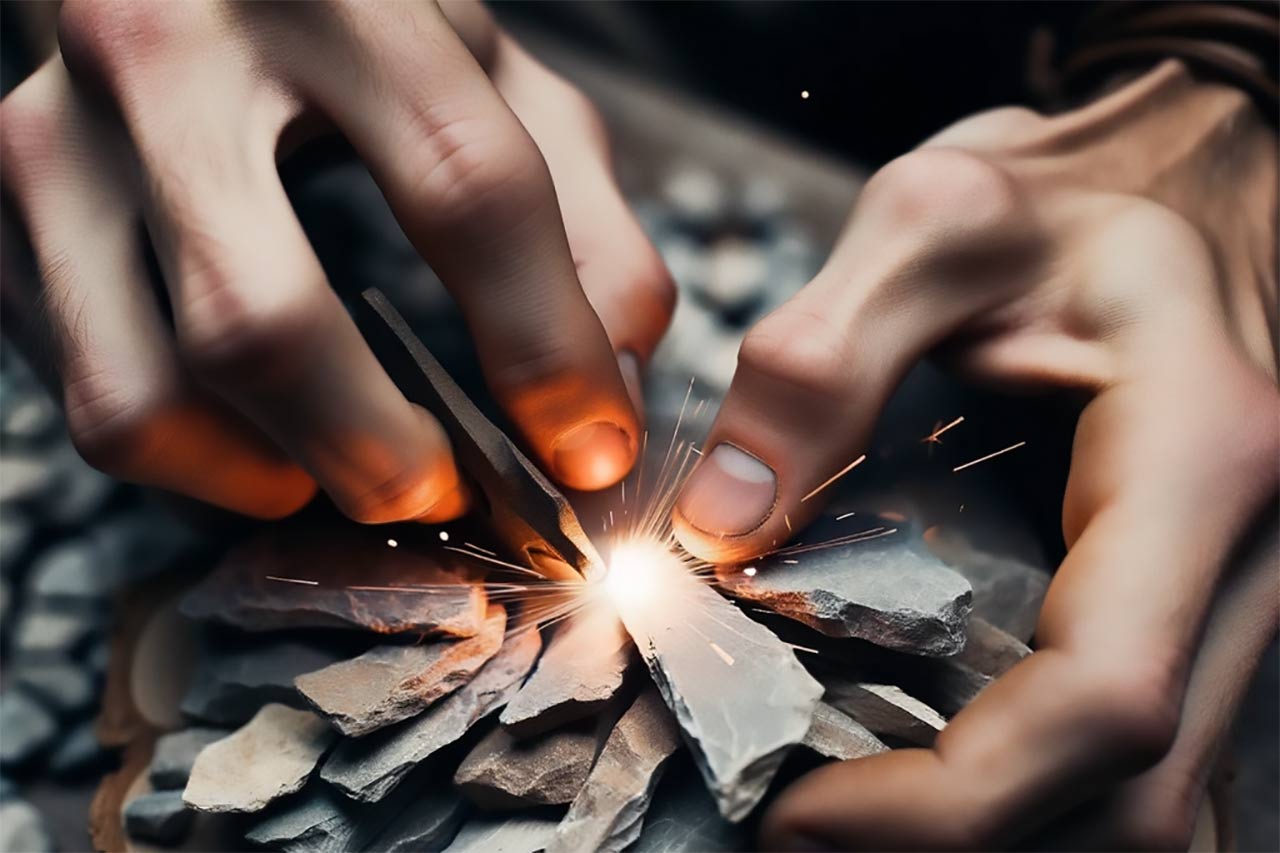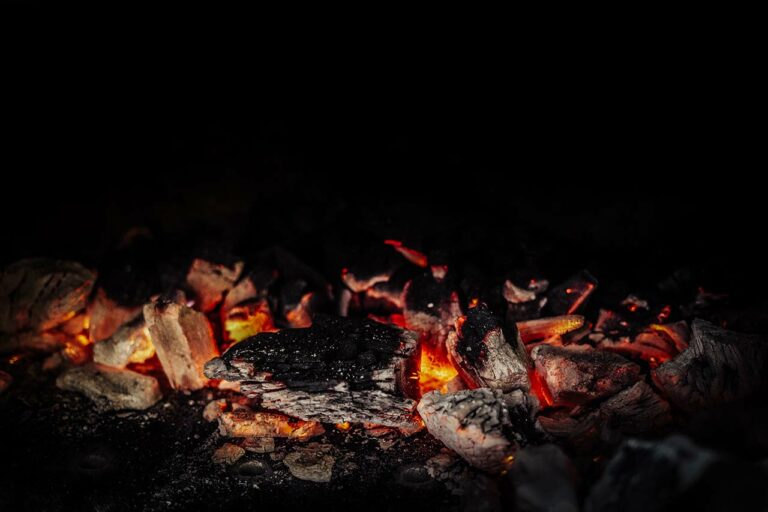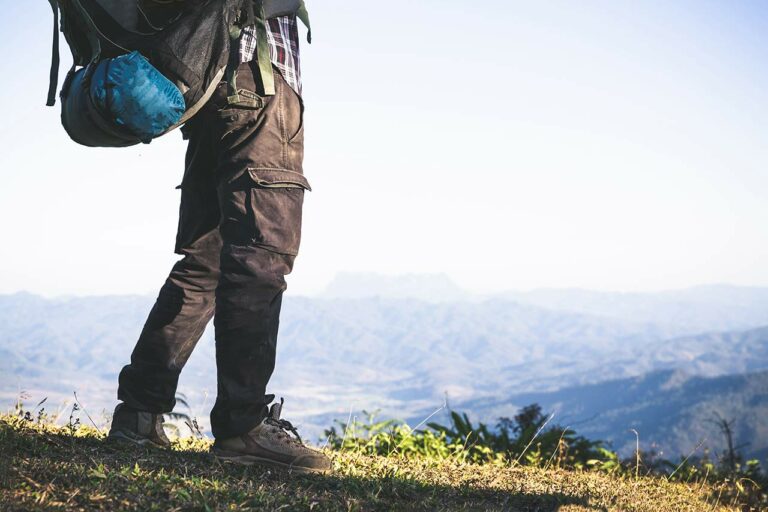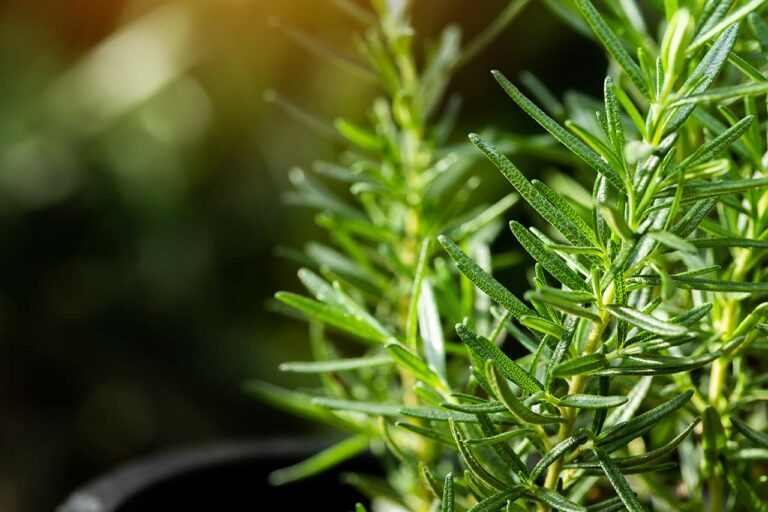How To Start A Fire In The Wild With Nothing (Essential Survival Guide)
Starting a fire in the wild with nothing can be quite a challenge, but it’s an essential survival skill every survivalist should master. Whether you find yourself stranded in the wilderness or just want to test your abilities to be ready in the case of an emergency, knowing how to create a fire with natural materials is invaluable. This skill, one of the oldest there is, will provide you with warmth, protection, and the means to cook food when you have nothing else to fall back on.
Natural Materials You Can Use as Fire Starters
In the wilderness, you’ll find several materials that are natural fire starters. When the going gets tough, and night’s closing in, these are the things to get your hands on:
Tinder
Tinder catches fire easily and helps ignite kindling. Dry grass, leaves, and bark make excellent tinder. When collecting tinder, look for materials that are dry and easy to break down.
Kindling
To sustain a flame, you’ll need kindling, such as twigs and small branches. Dry wood is preferable, as it ignites more easily than green wood. You can use other natural materials, like pinecones and wood shavings, to provide additional fuel. Avoid damp or rotten wood, since it won’t burn well.
Flint
Flint rock is a natural material that can generate generous sparks when struck against a steel blade, like a knife. Of course, you’ll need to provide the knife.
If you don’t have a knife, flint-on-flint will also work to produce a spark, though it requires a bit more effort. When choosing your flint, look for one piece with a sharp edge for striking and one piece with a good flat surface to serve as the striking platform.
Building the Fire
Once you have the essential materials — tinder, kindling, and flint — you can start building your fire from “nothing.” Here’s how to do it:
1. Prepare the fire bed.
-
- Lay down your tinder in a loose pile as the foundation.
- Place your kindling on top of the tinder, arranging it in a teepee or pyramid structure. Ensure there’s room for airflow through the tinder, but keep the structure tight enough to allow the flame to spread to all the pieces.
2. Strike the flint.
-
- Strike the sharp edge of one piece of flint against the flat surface of the other piece, creating a spark. Aim this spark towards the tinder.
- Once the tinder ignites, gently blow on the flame to help spread it and ensure the kindling catches fire.
3. Maintain the fire.
-
- As the kindling starts to burn and create a stable flame, continue to add more kindling gradually.
- Once a steady flame is achieved, you can use larger pieces of wood (if available) to maintain the fire for a longer duration.
Remember, practice makes perfect. The more you familiarize yourself with the process, the easier it becomes to start a fire in the wild using only natural resources.
Alternatives to Flint
While flint may be the most well-known and prevalent natural fire sparker, there are a few other rocks and minerals found in the wilderness that can perform the same duty in a fire-from-nothing scenario. Here are some alternatives to flint you might come across:
- Chert: Chert is a sedimentary rock composed mostly of silica. It is very similar to flint and can produce a spark when struck against steel or other hard rocks.
- Quartz: Commonly found in many environments, quartz can be used to produce a spark when struck against high-carbon steel. In the absence of steel, it’s much harder but not impossible to get a spark with quartz-on-quartz, especially if one piece has a sharp edge.
- Jasper: A form of chert, jasper is another rock that can create sparks. It often has a red, yellow, or brown coloration.
- Obsidian: While not as commonly used as flint or chert for fire-starting, obsidian, a volcanic glass, can produce sharp edges and can be used to scrape sparks from certain materials.
- Pyrite: Often referred to as “Fool’s Gold,” pyrite can create sparks when struck against steel. Pyrite has also been used with flint or other hard rocks to produce a spark, though this method can be more challenging than using flint alone.
Friction Methods to Ignite a Natural Fire
Hand Drill Method
The hand drill method is a classic and challenging way to create a fire using friction. The method requires a spindle (a straight, dry, and cylindrical piece of wood) and a fireboard (a flat piece of wood with a groove for the spindle). By rapidly spinning the spindle between your hands while it’s inserted into the fireboard’s groove, you generate friction and heat, producing an ember.
Bow Drill Method
An advancement of the hand drill, the bow drill method is a more efficient friction-based technique to start a fire. You’ll need a bow (a curved piece of wood), a string (which could be made from plant fibers, sinew, or rawhide), a spindle, and a fireboard. Attach the string to the bow, creating tension. Wrap the string around the spindle and place it into the notch on the fireboard. Hold the bow horizontally and saw back and forth, spinning the spindle rapidly. Keep at it, and soon, an ember will form and ignite your tinder.
Fire Plow Method
The fire plow method is another friction technique that uses a plow stick (a straight, pointed piece of wood) and fireboard. Carve a groove into the fireboard, then rub the plow stick back and forth along the track, creating friction between the two. With persistence, this friction will generate heat and create an ember in the groove of the fireboard.
Maintaining and Controlling the Fire
Whenever you start a fire in the wild, it’s crucial to maintain and control it to prevent any accidents. Let’s go over some important aspects to consider while enjoying the warmth and safety of your fire.
Fuel and Oxygen
Fuel and oxygen play significant roles in keeping your fire going. To make your fire last longer, gradually add larger logs after the kindling has ignited. The larger logs will provide a steady supply of fuel for a longer period of time. Don’t forget that your fire needs oxygen to burn, so avoid piling logs too close together or smothering the fire with too much fuel at once. This can starve the flames of necessary oxygen.
Fire Regulations
Being aware of fire regulations in your area is essential when practicing natural fire-starting, as some locations have strict rules governing wilderness fires. In some cases, you may need a permit or authorization to start a fire. These regulations are in place to prevent wildfires and to protect the environment.
Vigilance
Once you build a fire in the wild, never leave it unattended.
Be cautious when adding materials to the fire or stoking it, as these things can cause the fire to spread unexpectedly.
Maintaining
Learning how to properly maintain a fire’s glow can be beneficial for your warmth and comfort during the night. Periodically rearrange logs to have the best possible contact with the glowing embers, which will help to produce consistent heat. Just be careful not to disrupt the fire’s balance of fuel and oxygen when rearranging, which can put the fire out.
Frequently Asked Questions
What materials work best for starting a fire in the wild?
The ideal materials for starting a fire in the wild are dry and easily combustible. Dry grass, small twigs, and leaves are great options. Paper or other dry cellulose materials found in your surroundings can also be used as kindling.
How can friction be used to create fire?
Friction can be used to generate heat, which is necessary to ignite a fire. One common method that uses friction is the hand-drill method. This involves using a spindle or straight stick to rub against a fireboard or a flat piece of wood until an ember is formed. The ember can then be transferred to a tinder bundle and gently blown on to start the fire. Keep in mind that this method requires persistence and practice, as it can be challenging to create enough heat through friction alone.
What are some ways to use a lens to start a fire?
A lens can be used to concentrate sunlight and create a small, focused heat source capable of igniting a fire. For this method, you’ll need a clear, convex lens, like the ones found in eyeglasses or a magnifying glass. Position the lens between the sun and your tinder, concentrating the sunlight into as small and focused a point as possible on the tinder. Keep the lens steady until the tinder begins to smolder and eventually ignites.
It’s not starting a fire from nothing, but it’s a good skill to have in your back pocket.
Which natural sources of tinder are effective for fire-starting?
Some effective natural sources of tinder found in the wild include:
- Dry grass: Helps to catch sparks and ignites easily
- Dry leaves: Can be crushed and used to catch sparks or ignite from a focused sunlight
- Tree bark: Certain types of tree bark, such as cedar or birch, can be shredded and used as tinder
- Dry moss: Ignites quickly and is useful for maintaining a small flame
Always choose the driest, most combustible materials in your surroundings for the best results.
How can sparks be produced using rocks?
Sparks can be generated using certain types of rocks, such as flint or quartz, by striking them against a piece of steel or another hard, ferrous material. The rough edge of the rock should be used for striking, and a sharp, glancing blow is most effective in producing a spark. Once a spark is generated, it can be directed toward your tinder to ignite the fire.
Can water be used as a magnifier to ignite a fire?
Yes, water can be used as a makeshift lens to focus sunlight and ignite a fire. For this method, you’ll need a clear plastic bag or a similar transparent container filled with water. Shape the container into a round, lens-like form and hold it between the sun and your tinder, focusing the sunlight on the tinder to create a heated point. This method takes considerable patience and practice, as maintaining a steady lens shape can be difficult.




